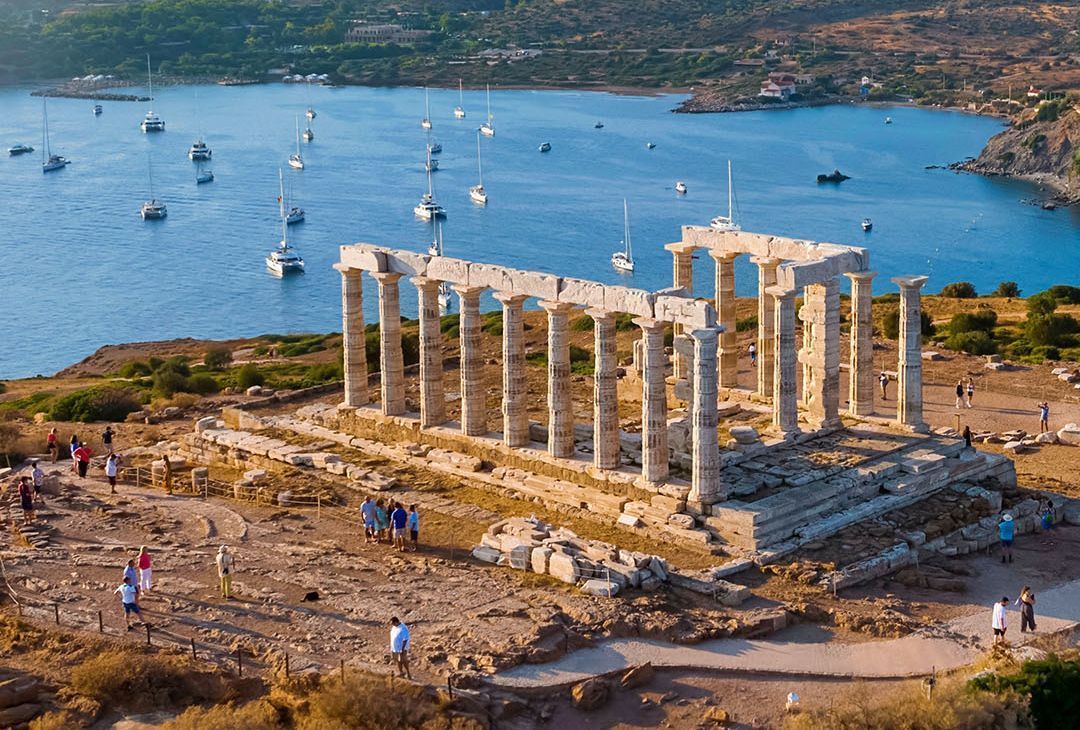
Photo source: Visit Greece
After a decade of record-breaking growth, Greek tourism is at a crossroads, says a new report from the National Bank of Greece.
According to analysts, Greek tourism’s “next chapter” must focus on sustainability, new markets, and more balanced development.
Despite global uncertainties, Greek tourism is expected to continue growing in 2025, with arrivals forecast to increase between 3 percent and 5 percent, aligned with worldwide trends. This outlook is supported by a 10 percent rise in air traffic during the first quarter and a 4 percent increase in scheduled seats from May to October.
However, the report notes that international geopolitical and economic challenges continue to weigh on travel spending, reflected in consumer confidence indexes in major European markets remaining 5 points below the long-term average.
“Following a remarkable 63 percent increase in arrivals to Greece between 2013 and 2024, the focus is shifting from breaking records to establishing a sustainable growth model,” analysts say, highlighting that growth must now be supported by a strategic shift – away from reliance on traditional markets and peak-season tourism.
Two key areas are identified as priorities: expanding into long-haul markets and strengthening lesser-known destinations.
Long-haul tourism is key

According to analysts, long-haul tourism is expected to contribute half of global tourism growth over the next decade, offering Greece a pathway to reduced seasonality and higher per-visitor spending.
The report notes encouraging signs from the US market, which now accounts for 7 percent of arrivals – up from 6 percent in 2024 – and delivers twice the per-visitor spending of European tourists. Moreover, half of US travelers visit Greece outside the peak summer months, a pattern that could help ease pressure on infrastructure and extend the tourist season.
The rise in direct air connections is further boosting long-haul potential, according to the report. In summer 2025, Greece is projected to host around 100 direct flights per week from the US, nearly double the pre-pandemic level, while connections with China are also on the rise.
Meanwhile, the report notes that Greece’s more mature destinations – such as Crete, the Cyclades, the Dodecanese, and Halkidiki – are leading in adaptation. Over two-thirds have invested in expansion and modernization over the past three years, including digital upgrades and efforts to promote local products and experiences. However, hotels in less-established regions are lagging behind, showing only a fraction of this strategic engagement.
Greece’s emerging destinations have a clear opportunity

The report argues that with global travel trends shifting toward “authentic” and off-the-beaten-path experiences, Greece’s emerging destinations have a clear opportunity – but only if supported by targeted investment and planning.
Analysts argue that fostering a more targeted and developmental approach in these emerging destinations, inspired by the mature tourism areas, could unlock significant new opportunities and support a more balanced national tourism growth.
“As Greece enters a new phase of tourism development, the challenge is no longer about breaking records,” analysts conclude, “but about ensuring long-term competitiveness through sustainability, innovation, and inclusivity.”
Follow GTP Headlines on Google News to keep up to date with all the latest on tourism and travel in Greece.
Source link



